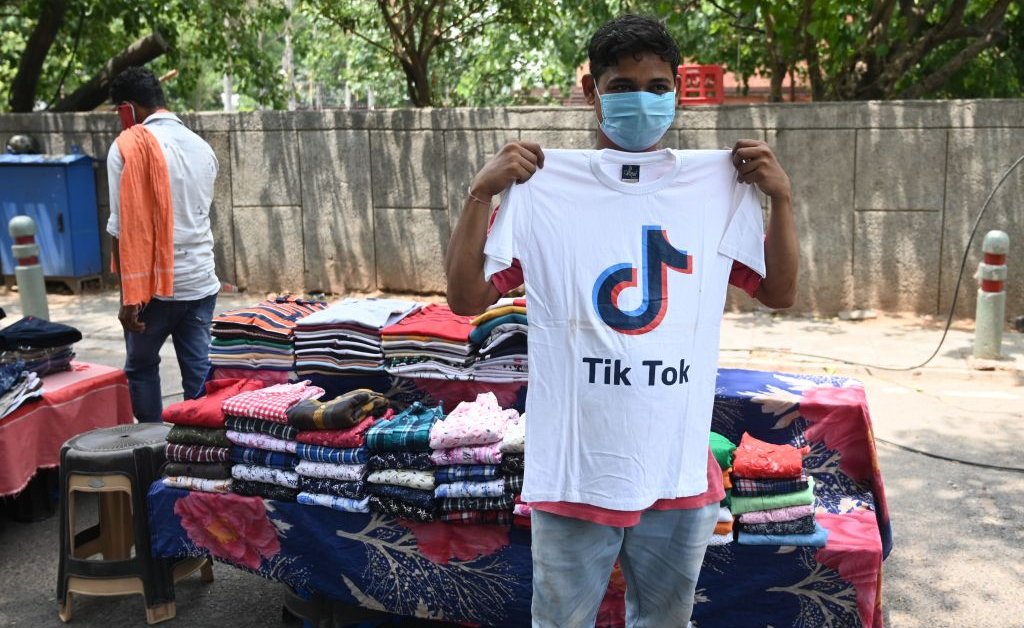
Translating…
Sino-Indian family members have taken one other hit following New Delhi’s possibility to ban 59 Chinese apps that it claims pose a “possibility to sovereignty and integrity.” The pass marks the most modern salvo between the nuclear-armed neighbors after a Himalayanborder skirmishon June 15 that saw in any case 20 killed when troops from both facets clashed with golf equipment and rocks.
On Monday, India’s Ministry of Electronics and Data Expertise launched aassertionclaiming that favorite Chinese apps—in conjunction with ByteDance’s TikTok, Tencent’s WeChat, Alibaba’s UC Net and Baidu’s blueprint and translation companies and products—had been harvesting recordsdata and sending it to international servers.
“The compilation of those recordsdata, its mining and profiling by functions hostile to national security and defense of India, which in the cease impinges upon the sovereignty and integrity of India, is a subject of very deep and quick assure which requires emergency measures,” the ministry acknowledged.
Kiranjeet Kaur, a senior manager at market intelligence firm World Data Corporation, acknowledged that the app ban turned into as soon as clearly spurred by the border conflict, which took space in the a long way away Galwan Valley. “There had to be some ramifications or repercussions after what went on on the border so it’s now not that lovely,” she acknowledged.
With 120 million native customers, TikTok has its biggest international market in India. The app turned into as soon as briefly blocked final one year after a court dominated that some grunt material uncovered formative years to pornography, cyber-bullying and sexualization, but that ban turned into as soon as rescinded following a correct enchantment. Many customers have now taken to totally different forms of social media to lament the most modern prohibition.
It’s unclear whether or now not the ban augurs a broader Indian decoupling from Chinese tech esteem that being pursued by the Trump administration, which has sanctioned telecoms large Huawei and is urging New Delhi to play a greater strategic feature in the Indo-Pacific plan. But it undoubtedly is in point of fact a local for China’s faltering“wolf warrior” diplomacy—a bellicose make of statecraft named after apair of Chinese military blockbusters. Beijing’s hawkish new postures, along with the COVID-19 pandemic, have contributed to global anti-China sentiment reaching its very best level since the 1989 Tiananmen Square crackdown, per China’s Institutes of Contemporary World Relatives.
“I’m a little bit of bit terrified whether or now not high leaders are getting right recommendation from experts in the know,” says Prof. Yuan Jingdong, an Asian security educated on the College of Sydney. “Very fair right, blunt recommendation is getting moderated, diluted or distorted so leaders easiest hear what they like to listen to.”
Chilling of ties
Quelling this most modern spat will preserve tact. Each neighbors are led by nationalists who must fulfill the increasingly extra strident calls for of the publics they’ve stoked. In India, following the Galwan Valley clashes, Chinese flags and pictures of President Xi Jinping had been burned in the streets amid calls to boycott Chinese goods and companies. (Some Chinese outlets in India—fair like smartphone market leader Xiaomi—were protectively pasting “Made in India” indicators on their premises.) In turn, many Chinese have taken to social media to mock India for having “no exports to boycott.”
Tarun Pathak, of trade analysts Counterpoint Study, tells TIME that India is probably going to be keen to negotiate a truce if Chinese tech companies camouflage that every and every one the knowledge is in the neighborhood stored and there are no privacy or security assure with their apps. “It remains to be viewed whether or now not this ban is permanent,” he says. “But when the authorities [withdraws the ban] in 10 or 20 days, the backlash shall be fierce.”
In actual fact, both countries will suffer from a chilling of ties. Bilateral trade stands at $90 billion (despite the undeniable truth that India has a $60 billion deficit.) India’s large cyber web market is world’s second biggest and dominated by Chinese companies. Four of India’s high 5 smartphone makers are Chinese owned, comprising a whopping 81% of total market share. (Attributable to excessive import duties, 95% of smartphones sold in the Indian market are manufactured or assembled in the neighborhood.)
While banning apps is less complicated that concentrating on hardware, Indian customs have already begun scrutinizing tech imports from China “extra stringently, slowing formulation entering the country, which in the cease slows down the manufacturing process,” says Kaur.
A tech war between the sector’s two most populous countries stands to bog down Chinese growth and threaten tens of hundreds of Indian jobs against the backdrop of a coronavirus-related slowdown. India’s 490 million smartphone customers portray an large and silent beneath-penetrated market, providing Chinese companies a precious opportunity for growth.
The demand is whether or now not China can temper its nationalist posture to negotiate a compromise. Newest indicators are now not appropriate. On high of perennially chilly family members with Japan, South Korea, and rivals in the South China Sea, Beijing is furthermore bickering with Australia over claims of espionage and political interference, Canada over the arrest of Huawei CFO Meng Wenzhou, and the U.K. over political freedoms in the archaic British colony of Hong Kong. All of this comes as family members with Washington attain a nadir.
“It’s clearly now not appropriate management of diplomacy,” says Prof. Yuan. “When all people round the sector is complaining about Donald Trump, China’s [status] ought to be on the upward thrust.”
Rep The Brief.Sign in to assemble the tip tales or now not it is a long way very essential to understand fair as we assure.

Thanks!
To your security, we now have sent a affirmation e-mail to the contend with you entered. Click the hyperlink to confirm your subscription and starting up up receiving our newsletters. At the same time as you occur to don’t catch the affirmation internal 10 minutes, please test your spam folder.
Write toCharlie Campbell atcharlie.campbell@time.com.

